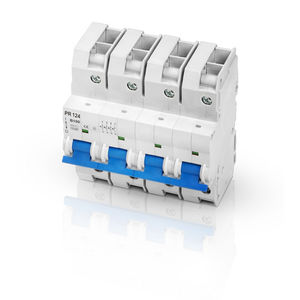hotline Tel
Plug in the charging gun, but it cannot be charged, what should I do?
In addition to the problem of the charging pile or the power supply circuit itself, some car owners who have just received the car may encounter this situation when they charge for the first time. No desired charging. There are three possible reasons for this situation: the charging pile is not properly grounded, the charging voltage is too low, and the air switch (circuit breaker) is too small to trip.
1. The charging pile is not properly grounded
For safety reasons, when charging new energy electric vehicles, the power supply circuit is required to be properly grounded, so that if there is an accidental leakage (such as a serious electrical fault in the electric vehicle that causes the insulation failure between the AC live wire and the body), the leakage current can be left back to the power distribution through the ground wire. The terminal will not be dangerous when people accidentally touch it due to the accumulation of leakage electric charge on the vehicle.
Therefore, there are two prerequisites for personal danger caused by leakage: ① There is a serious electrical failure in the vehicle electrical; ② The charging pile has no leakage protection or the leakage protection fails. The probability of these two kinds of accidents happening is extremely low, and the probability of simultaneous occurrence is basically 0.
On the other hand, due to reasons such as construction cost and personnel level and quality, many domestic power distribution and electricity infrastructure constructions have not been completed in full accordance with the construction requirements. There are many places where electricity is not properly grounded, and it is unrealistic to force these places to improve the grounding due to the gradual popularization of electric vehicles. Based on this, it is feasible to use ground-free charging piles to charge electric vehicles, provided that the charging piles must have a reliable leakage protection circuit, so that even if the new energy electric vehicle has an insulation failure and accidental contact, it will be interrupted in time. Open the power supply circuit to ensure personal safety. Just like although many households in rural areas are not properly grounded, the households are equipped with leakage protectors, which can protect personal safety even if an accidental electric shock occurs. When the charging pile can be charged, it needs to have a non-grounding warning function to inform the user that the current charging is not properly grounded, and it is necessary to be vigilant and take precautions.
In the event of a ground fault, the charging pile can still charge the electric vehicle. However, the fault indicator flashes, and the display screen warns of abnormal grounding, reminding the owner to pay attention to safety precautions.
2. The charging voltage is too low
Low voltage is another main reason for not charging properly. After confirming that the fault is not caused by ungrounded, the voltage is too low may be the reason for the failure to charge normally. The charging AC voltage can be viewed through the charging pile with display or the central control of the new energy electric vehicle. If the charging pile has no display screen and the new energy electric vehicle central control has no charging AC voltage information, a multimeter is required to measure. When the voltage during charging is lower than 200V or even lower than 190V, the charging pile or the car may report an error and cannot be charged.
If it is confirmed that the voltage is too low, it needs to be solved from three aspects:
A. Check the specifications of the power taking cable. If you use 16A for charging, the cable should be at least 2.5mm² or more; if you use 32A for charging, the cable should be at least 6mm² or more.
B. The voltage of the household electrical appliance itself is low. If this is the case, it is necessary to check whether the cable at the household end is above 10mm², and whether there are high-power electrical appliances in the household.
C. During the peak period of electricity consumption, the peak period of electricity consumption is generally 6:00 pm to 10:00 pm. If the voltage is too low during this time period, it can be put aside first. Generally, the charging pile will automatically restart charging after the voltage returns to normal. .
When not charging, the voltage is only 191V, and the cable loss voltage will be lower when charging, so the charging pile reports an undervoltage fault at this time.
3. Air switch (circuit breaker) tripped
Electric vehicle charging belongs to high-power electricity. Before charging an electric vehicle, it is necessary to confirm whether the air switch of the correct specification is used. 16A charging requires a 20A or above air switch, and 32A charging requires a 40A or above air switch.

It should be emphasized that the charging of new energy electric vehicles is high-power electricity, and it is necessary to ensure that the entire circuit and electrical equipment: electricity meters, cables, air switches, plugs and sockets and other components meet the charging requirements. Which part is under-spec, which part is likely to burn out or fail.